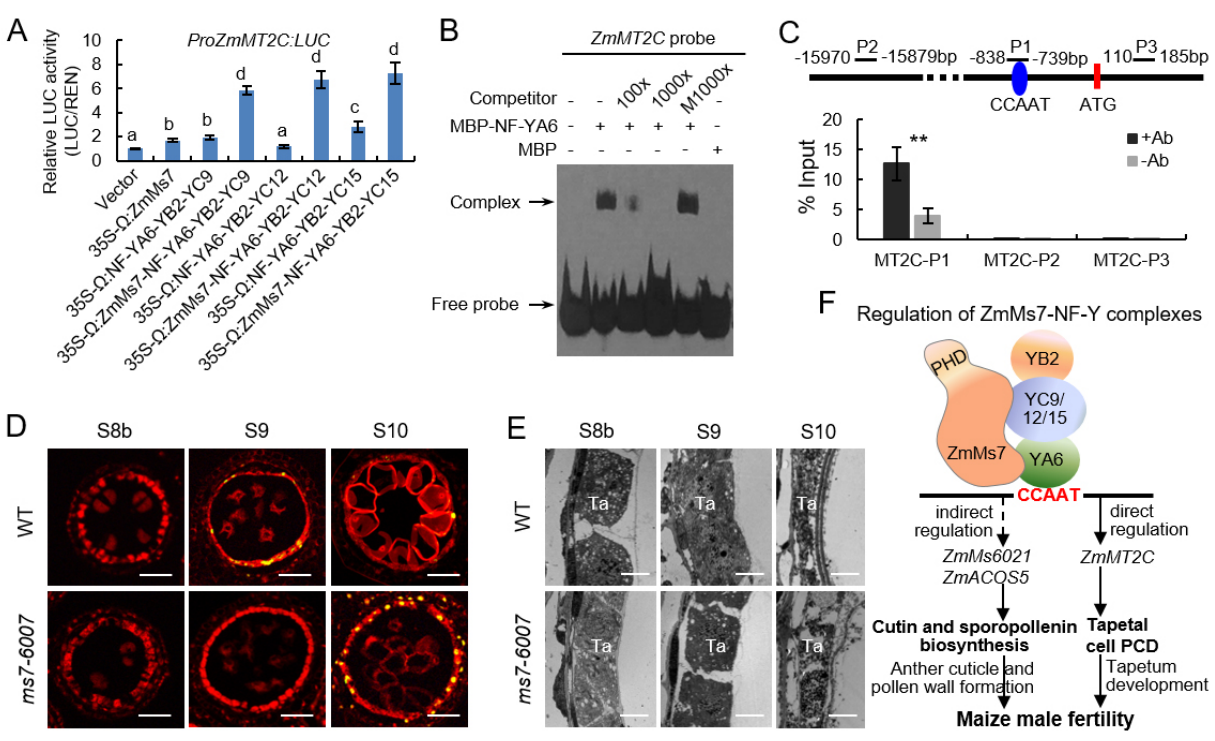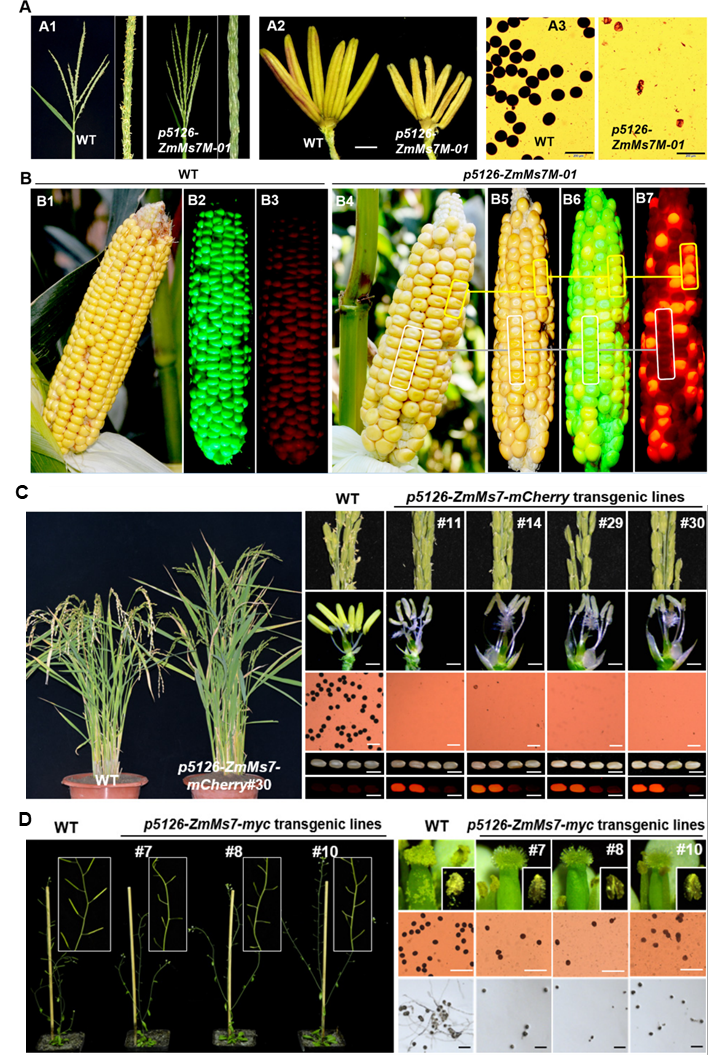News and events from USTB about research, science and technology, social science, art,
faculty and staff, students life and issues happening all around the world.
Topics
Date
Views



Heterosis is a phenomenon in which heterozygous hybrid progeny are superior to both parents and can offer 20% to over 50% yield increases in various crops. Developing practical male-sterility systems are essential for heterosis utilization and commercial hybrid seed production in crops, especially for plants without cloned male-sterility genes.

Recently, Professor Xiangyuan Wan’s team cooperated with Academician Longping Yuan and successfully developed a universal dominant male-sterility system in multiple plant species by using the maize male sterility gene ZmMs7. ZmMs7 is specifically expressed in maize anthers, encodes a plant homeodomain (PHD) finger protein that functions as a transcriptional activator, and plays a key role in tapetal development and pollen exine formation. ZmMs7 can interact with maize nuclear factor Y (NF-Y) subunits to form ZmMs7-NF-YA6-YB2-YC9/12/15 protein complexes that activate target genes by directly binding to CCAAT box in their promoter regions (Figure 1). Premature expression of ZmMs7 in maize by an anther-specific promoter p5126 results in dominant and complete male sterility but normal vegetative growth and female fertility. Early expression of ZmMs7 downstream genes induced by prematurely expressed ZmMs7 leads to abnormal tapetal development and pollen exine formation in p5126-ZmMs7 maize lines. The p5126-ZmMs7 transgenic rice and Arabidopsis plants display similar dominant male sterility (Figure 2). Meanwhile, the mCherry gene coupled with p5126-ZmMs7 facilitates the sorting of dominant sterility seeds based on fluorescent selection. In addition, both the ms7-6007 recessive male-sterility line and p5126-ZmMs7M dominant male-sterility line are highly stable under different genetic germplasms and thus applicable for hybrid maize breeding. Therefore, this work provides insight into the mechanisms of anther and pollen development and a promising technology for hybrid seed production in crops.

This work has been published online in PNAS ( PROCEEDINGS OF THE NATIONAL ACADEMY OF SCIENCES OF THE UNITED STATES OF AMERICA ) on September 9, 2020, doi.org/10.1073/pnas.2010255117
Author:Zhong Zhi, International Institute of Agricultural Biosciences,Biology and Agriculture Research Center
Topics
Date
Views